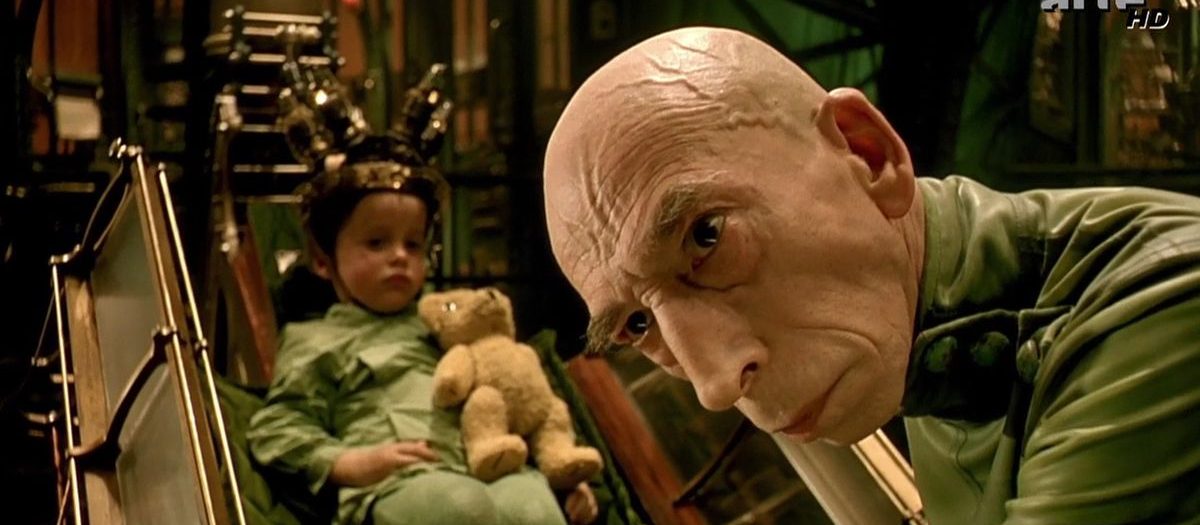
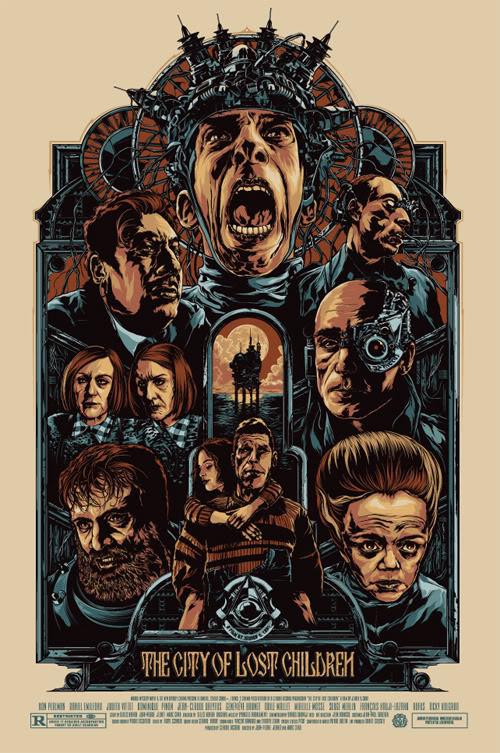
“And I don’t know if I’m swimming in the skies, or flying at the bottom of the sea.”
Slightly tamer but no less stylish than their cannibalistic cult black comedy Delicatessen, Marc Caro and Jean-Pierre Jeunet’s The City of Lost Children features the same offbeat style and distinct visual palette that appealed to fans of their first collaboration.
Their second film is a surreal steampunk fairy tale set in a small harbor town in a world that’s not quite like our own, where the maniacal Krank (Daniel Emilfork) snatches children off the streets in order to harvest their dreams for himself; where a carnival strongman teamed up with an amnesiac deep sea diver and an orphan girl saves the day. It features exquisite production design and visual flair, a unique, oddball world populated with a surreal cast of misfits, and a lurching, erratic storyline that is bound to put many off of it in the early going but ultimately works itself out. It’s a bizarre and delightful journey, enjoyable even if the only pleasure was luxuriating in the singular dream world that Caro and Jeunet conjured up.
The mad scientist Krank, who lives aboard an abandoned oil rig, utilizes a cult of cyborgs to kidnap children for his experiments. In exchange for their services, he provides them with mechanical eyes and ears to keep his system working smoothly. Once the children are aboard his rig, he utilizes a clunky apparatus to extract their dreams while they sleep. He does this because he is rapidly aging due to his own inability to dream—a defect baked into his hardware by his creator, an even madder scientist who vanished sometime in the past. Krank shares his lair with the absentee’s other creations: a dwarf named Martha (Mireille Mossé), a brain in a vat named Irvin, and six narcoleptic clones all portrayed by Dominique Pinon. Krank’s diabolical plans encounter a hiccup when he kidnaps young Denree (Joseph Lucien), the adopted brother/child of a carnival strongman named One (Ron Perlman—the sole American actor in the cast who had to learn his French lines phonetically because he did not speak the language).
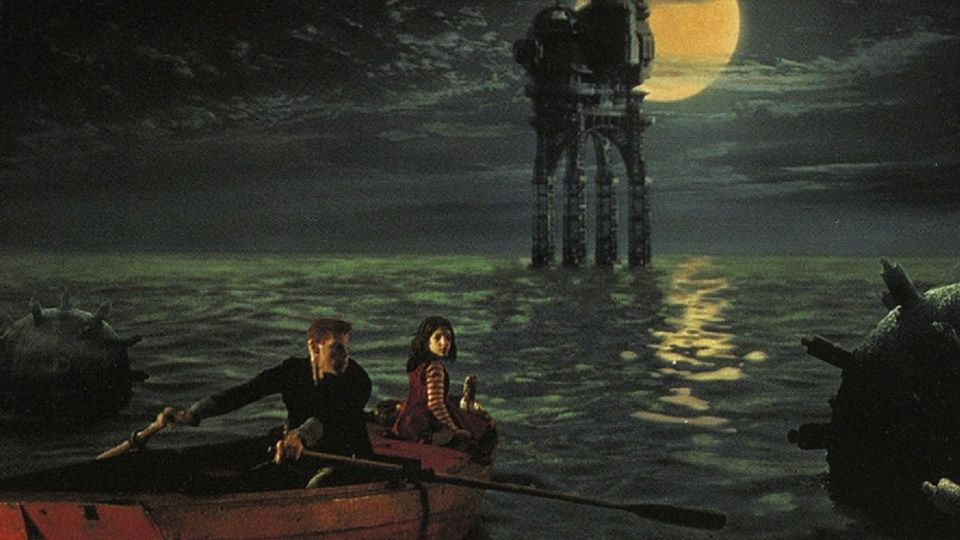
Freed from his occupation when his manager is stabbed by a mugger, One contracts with a band of criminal orphans led by Siamese twins (Geneviève Brunet and Odile Mallet) with the moniker The Octopus. Soon One and orphan Miette (Judith Vittet) are infiltrating the headquarters of the Cyclops cult, where they are caught and sentenced to death. One is rescued by circus performer Marcello (Jean-Claude Dreyfus) and his band of mechanical, poison pill-injecting fleas. Miette appears to drown in the harbor, but miraculously, there’s a deep sea diver who lives beneath the water (Dominique Pinon, again) and suffers from amnesia who pulls her from the murky depths before it is too late. When a dream-in-a-bottle released by Irvin is found by One, Miette, and the diver, the diver’s memory is jogged and he remembers that he was indeed the creator of Krank, the clones, Irvin, and Martha, and that they’d taken over his laboratory and left him for dead. The trio converge on the oil rig, where Miette wins a dream battle of wits with Krank.
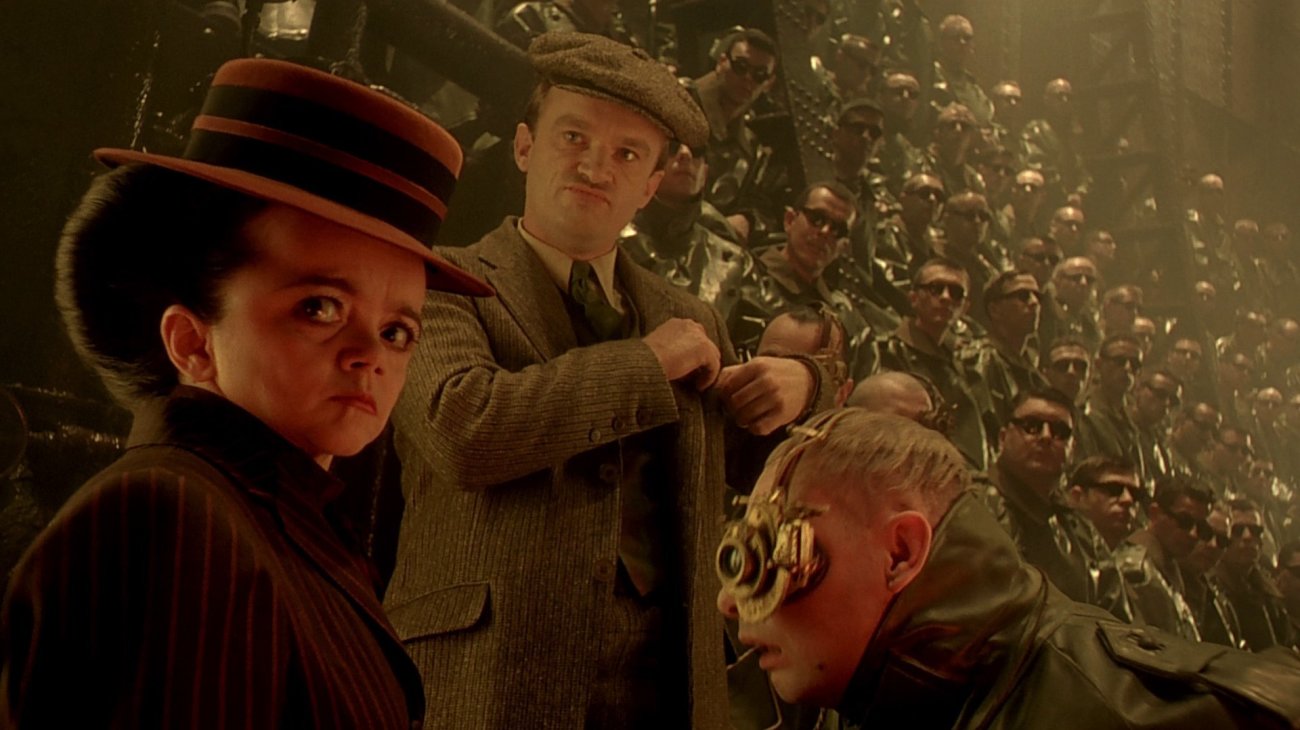
On stylistic, thematic, and aesthetic grounds, The City of Lost Children is an undeniable success. Just moseying around in this peculiar dream world is delightful, from the zany characters and theatrically wooden performances to the imaginative set construction and retrofuturistic tech (goggles, monocles, bulky mechanical devices, brass diving helmets, brains in vats, naval mines, etc.). The setting and visual design are the film’s greatest achievements, creating a brilliantly realized gloomy dystopia that probably qualifies as some sort of steampunk quintessential. Also unique is the claustrophobic lensing, which places great emphasis on close-ups and fish-eye lenses (the bulging veins on Daniel Emilfork’s forehead are frequently featured)—a stylistic choice that some may find off putting but serves to further distinguish the film visually.
Themes of childlike wonder, the futility of lusting after youth, and the escape from the rational into dreams and imagination dominate The City of Lost Children. It’s the same territory that Terry Gilliam likes to play in with films like Brazil and The Imaginarium of Doctor Parnassus. Though the idiosyncratic fantasy has much to recommend it by, it does start to show some narrative cracks the longer it goes on. For large swaths, the unique visuals and peculiar themes kind of sweep you up and keep you from noticing any shortcomings. But eventually, you’ll come to take the visual pyrotechnics for granted and realize that the story doesn’t match their spectacle, nor does its meandering adequately reflect the dreamlike tone to make sense of it that way.
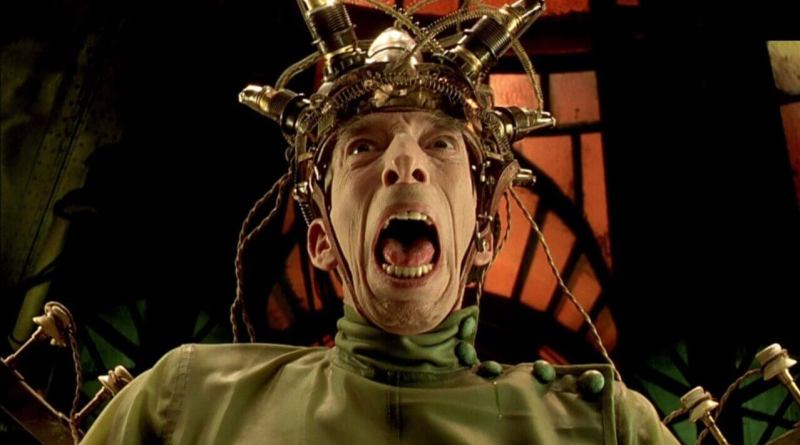
For my money, The City of Lost Children is technically brilliant enough to overcome its narrative letdown. If you can get over its pacing issues, appreciate its elementary good-vs-evil story, and simply revel in the strange universe of stolen dreams, circus freaks, and steampunk technology, you’ll find a film that is brilliant in all but a few facets. By mish-mashing visually interesting antique machinery with notions of some alternate future dystopia and throwing in a host of grotesque characters, Caro and Jeunet have, at the very least, created a completely novel world, an astounding feat for any filmmaker.